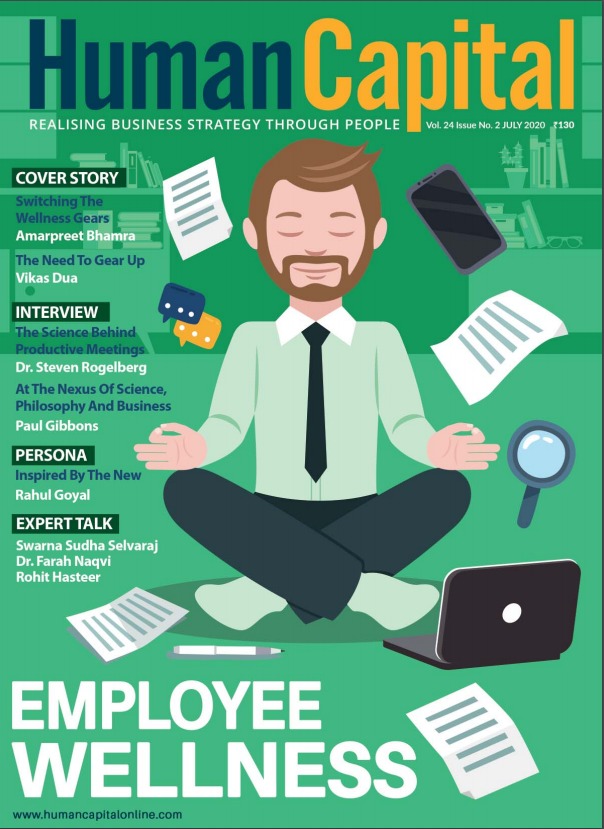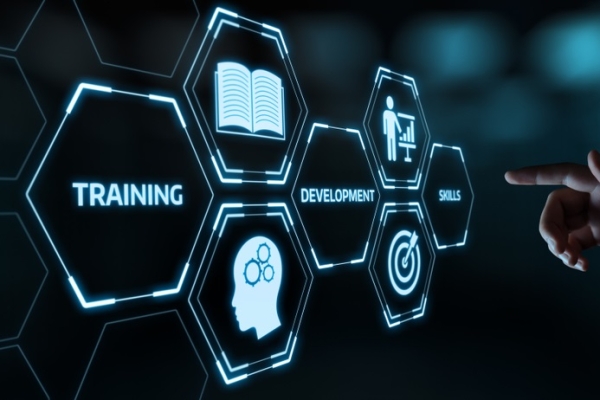Microaggressions directly influence employee morale, engagement, performance and retention. They lead to a toxic work culture – an environment of intimidation, provocative behaviour, and harassment.
Have you ever gone to a scheduled meeting with your manager and struggled to get their attention because they pretended to hear you while constantly checking their phone or responding to emails? You feel miserable every time they do it, but it’s difficult to confront them. I’ve been in such situations and swallowed my feelings during the early years of my career.
Something else that I keep experiencing while working across time zones and cultures is people complimenting me for my English language skills. They are surprised by my vocabulary and clarity of speech, and they keep saying that I don’t have an accent despite being Indian. Initially, this sounded positive; only now, I realise that these were microaggressions.
Microaggressions: What Does That Even Mean?
Microaggressions are hardly noticeable, minor expressions of a deep-seated and mostly unintentional bias against someone, based on something core to that person’s identity – race, ethnicity, gender, age, religion, disability, sexual orientation, appearance, or nationality. They are deeply rooted in the subconscious, and the offender may not even be aware of the bias.
Microaggressions are experienced in various forms – choice of words, tone of voice, body language, facial expressions, etc. They accumulate over time, and as the Indian saying goes, “Every drop makes an ocean.” Because they are typically directed at marginalised groups or individuals who already feel disrespected, ignored and powerless, the cumulative effect can significantly impact employees’ sense of belonging. Microaggressions and gaslighting are the silent killers of inclusive work environments. People suffer in silence, and those who cause the suffering have no idea that they were disrespectful !
In the past five years, many MNCs have taken the lead to sensitise their employees, especially senior leadership teams and people managers, on unconscious bias. However, few companies see awareness sessions on microaggressions as a necessity. Many organisations only realise the dire need for specific interventions when employees leave the organisation, go public with discrimination lawsuits, or their brand reputation is affected on social media. I have observed that companies headquartered in the USA and UK are way ahead in their journey to create inclusive workplaces compared to their offices in India, Singapore, or the Middle East.
Types of Microaggressions
The three main types of microaggressions as defined by Dr. Jummy Okoyo are:
1. Micro Assault: The offender behaves in an intentionally provocative or prejudiced way towards a marginalised community or individual. For example: Stereotyping people based on their religion or caste, referring to an LGBT+ person as an embarrassment or cracking racist jokes.
2. Micro Insult: A subtle discriminatory behaviour or comment, often in the form of a compliment that makes someone uncomfortable. For example: Calling a person with a disability or an openly out LGBT+ individual brave or inspiring.
3. Micro Invalidation: This is an act of invalidating or demeaning the ideas or experiences of a marginalised group or individual. For example: Regularly ignoring a woman’s ideas in team meetings or discounting the analytical or tech abilities of female and minority colleagues.
Do You Inadvertently Use Microaggressions?
As stated earlier, microaggressions are a form of unconscious bias. They are indirect, subtle, and often unintentional everyday verbal, behavioural and environmental slurs that communicate discrimination, hostility, or negative/ offensive attitudes toward marginalised groups. Some may find it surprising that microaggressions sound positive when disguised as compliments.
Microaggressions directly influence employee morale, engagement, performance and retention. They lead to a toxic work culture – an environment of intimidation, provocative behaviour, and harassment.
Here are a few examples of microaggressions in the workplace:
• Telling a person that they are intelligent despite their race/ ethnicity
• Complimenting a woman by saying how inspiring it is to see that she is so ambitious despite her gender
• Complimenting someone by telling them that they look great today, then following up with a statement about how it must be for an interview, appraisal meeting, client presentation, etc.
• Cutting off people or interrupting them constantly while they are speaking
• Regularly addressing people with wrong names or mispronouncing/ misspelling their names
• Forgetting to invite your team member to a relevant group meeting/discussion
• Constantly looking at your phone, watch or browsing through your emails during a discussion
• Forgetting to introduce someone in a meeting or asking for input from everyone except a particular person, thus leaving them out
• Cutting down someone’s ideas, rolling your eyes at their input, and changing your body language or voice tone in a way that communicates disinterest or a lack of faith in their ideas
• Speaking in a local or regional language that constantly makes others feel like outsiders
• Calling someone fair or lightskinned despite their race or the region they come from
• Asking people where they are really from or their own home country (many Asians who were born and raised in America have experienced this one)
Addressing Microaggressions
Here are a few ways to reduce microaggressions in the workplace:
• Sensitisation: Awareness is key to reducing and preventing any form of microaggression. Create awareness among your employees.
• Training Sessions: Similar to annual integrity and IT compliance training, mandatory microaggression sessions will ensure that the entire workforce is educated on acceptable language and behaviours in the workplace. Work with an expert/consultant to facilitate such trainings. It will help drive difficult conversations in a safe environment, further leading to realisations and “aha” moments.
• Confrontation: It is important not to let microaggressive comments pass by, and the best way to address them is to confront the perpetrators. Ask them why they said what they said, what made them say it, explain what they meant, where the comment came from, etc.
• Leveraging Humour: For those who can’t confront directly, using humour to diffuse the situation works, too. For example, if someone speaks over you, say, “Hey, I know you are as excited as I am to share your view, but I am not done sharing mine. Could you hold on to that thought for a few more seconds?”
• Inclusive Culture: Work on creating a psychologically safe environment. Provide your managers with tools and techniques to involve everyone on their teams and hear every voice and opinion.
• Grievance Redressal: Implement robust systems that allow employees to report discriminatory encounters anonymously through a hotline or by email.
• Taking Action: To prevent a toxic environment, make it a priority to address accusations. This helps send a message that the organisation cares about its employees’ mental well-being and won’t tolerate any discriminatory or derogatory behaviour.
• Increasing the Diversity of Your Network: I cannot stress this enough – get out of your comfort zone! Focus on meeting new people and making friends with people who are not like you.

Is your organisation post-COVID-ready?
Trending
-
SBI General Insurance Launches Digital Health Campaign
-
CredR Rolls Out 'Life Happens' Leave For Its Employees
-
Meesho Announces 30-Week Gender-Neutral Parental Leave Policy
-
Microsoft Unveils Tech Resilience Curriculum To Foster An Inclusive Future
-
60% Indian Professionals Looking For Job Change Due To COVID: Survey
-
SpringPeople And Siemens Collaborate For Digital Transformation Push
-
86% Professionals Believe Hybrid Work Is Essential For Work Life Balance: Report
-
Almost 1 In Every 3 People's Personal Life Affected Due To Work Stress
-
Meesho Rolls Out Reset And Recharge Policy For Employees
-
80% Of Talent Leaders & Academics Say Pandemic Changed Skill Needs For Youth: Report
-
Hero Electric Rolls Out 'Hero Care' Program For Employees
-
Human Capital In Collaboration With ASSOCHAM Hosts Virtual Conference
-
IKEA India, Tata STRIVE Collaborate To Create Employability And Entrepreneurship Opportunities
-
SAP India, Microsoft Launch Tech Skilling Program for Young Women
-
DXC Technology, NASSCOM Collaborate For Employability Skills Program
-
Lenskart To Hire Over 2000 Employees Across India By 2022
-
Mindtree Launches Learn-and-Earn Program
-
Tata AIA Extends 'Raksha Ka Teeka' To Its Employees
-
Swadesh Behera Is The New CPO Of Titan
-
NetConnect Global Plans To Recruit 5000 Tech Professionals In India
-
Hubhopper Plans To Hire 60% Of Indian Podcasters By 2022
-
Corporate India Needs More Women In Leadership Roles: Report
-
Aon to Invest $30 Million and Create 10,000 Apprenticeships by 2030
-
Tech Mahindra Launches ‘Gift a Career’ Initiative for Upskilling of Youth
-
40% Women Prefer Flexible Working Options in Post-COVID World: Survey
-
3 out of 4 companies believe they can effectively hire employees virtually: Report
-
Vodafone , CGI and NASSCOM Foundation launch digital skills platform
-
Odisha: Bank, postal employees to deliver cash for elderly, differently-abled persons
-
Skill India launches AI-based digital platform for "Skilled Workforce"
-
Hiring activity declines 6.73% in first quarter: Survey
-
70% startups impacted by COVID-19 pandemic
-
Bajaj Allianz Life ropes in Santanu Banerjee as CHRO
-
Over 70 Percent MSMEs look at cutting jobs to sustain businesses
-
93 Per Cent employees stressed about returning to office post-lockdown
-
Johnson & Johnson India announces family benefits for same gender partners
-
Indian firms turning friendly towards working mothers
-
Welspun India names Rajendra Mehta as new CHRO
-
Wipro partners with NASSCOM to launch Future Skills platform



Human Capital is niche media organisation for HR and Corporate. Our aim is to create an outstanding user experience for all our clients, readers, employers and employees through inspiring, industry-leading content pieces in the form of case studies, analysis, expert reports, authored articles and blogs. We cover topics such as talent acquisition, learning and development, diversity and inclusion, leadership, compensation, recruitment and many more.
Subscribe Now












































Comment